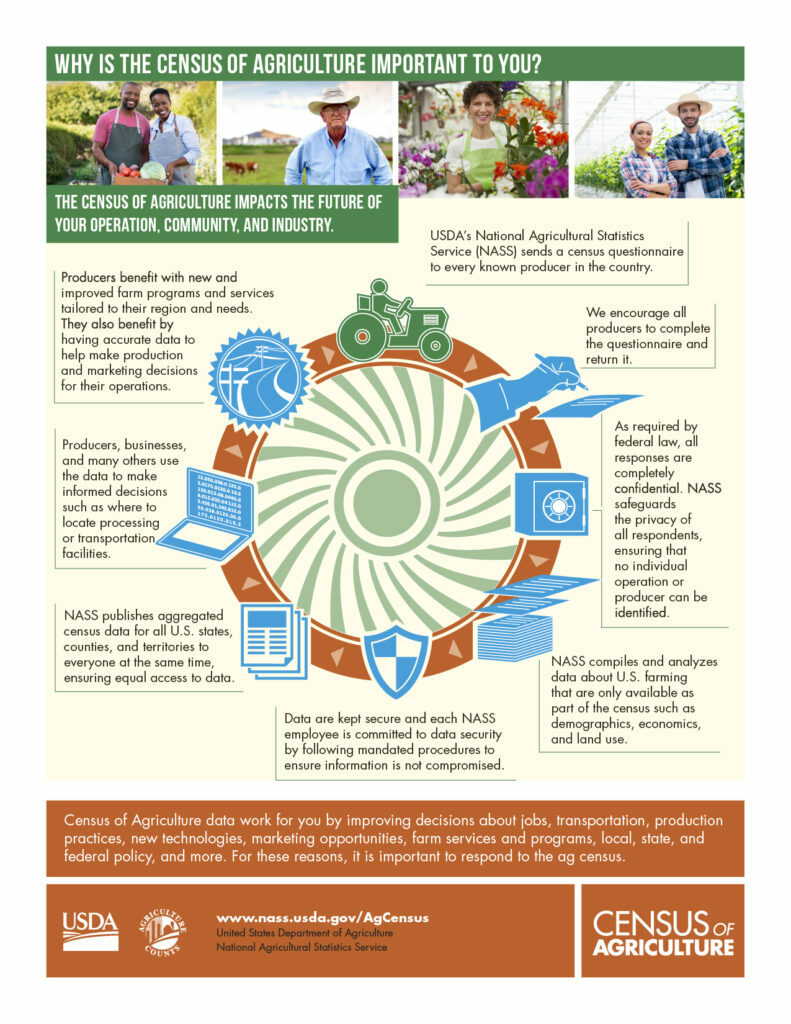2022 Ag Census
go.ncsu.edu/readext?909023
en Español / em Português
El inglés es el idioma de control de esta página. En la medida en que haya algún conflicto entre la traducción al inglés y la traducción, el inglés prevalece.
Al hacer clic en el enlace de traducción se activa un servicio de traducción gratuito para convertir la página al español. Al igual que con cualquier traducción por Internet, la conversión no es sensible al contexto y puede que no traduzca el texto en su significado original. NC State Extension no garantiza la exactitud del texto traducido. Por favor, tenga en cuenta que algunas aplicaciones y/o servicios pueden no funcionar como se espera cuando se traducen.
Português
Inglês é o idioma de controle desta página. Na medida que haja algum conflito entre o texto original em Inglês e a tradução, o Inglês prevalece.
Ao clicar no link de tradução, um serviço gratuito de tradução será ativado para converter a página para o Português. Como em qualquer tradução pela internet, a conversão não é sensivel ao contexto e pode não ocorrer a tradução para o significado orginal. O serviço de Extensão da Carolina do Norte (NC State Extension) não garante a exatidão do texto traduzido. Por favor, observe que algumas funções ou serviços podem não funcionar como esperado após a tradução.
English
English is the controlling language of this page. To the extent there is any conflict between the English text and the translation, English controls.
Clicking on the translation link activates a free translation service to convert the page to Spanish. As with any Internet translation, the conversion is not context-sensitive and may not translate the text to its original meaning. NC State Extension does not guarantee the accuracy of the translated text. Please note that some applications and/or services may not function as expected when translated.
Collapse ▲The Census of Agriculture, taken every five years, is a complete count of U.S. farms and ranches and the people who operate them. Even small plots of land count as long as $1,000 or more of agricultural products were raised and sold, or normally would have been sold, during the Census year. For America’s farmers and ranchers, the Census of Agriculture is their voice, their future, and their opportunity.
Census of Agriculture data are used by those who serve farmers and rural communities — federal, state, and local governments, agribusinesses, researchers, trade associations, and many others. Companies and cooperatives use the data to determine where to locate facilities that will serve agricultural producers. Community planners use the information to target needed services to rural residents. Legislators use census data when shaping farm policies and programs. Students, educators, and researchers use the data as part of their ongoing studies, education, and research initiatives. In Currituck County, where the percent population growth ranked #1 in the state in 2022, this data helps inform decisions around community growth, the importance of agriculture, and ultimately is used to help shape the County for the future.
The response deadline for the 2022 Census of Agriculture is February 6th, 2023. Learn more about the 2022 Agriculture Census on the USDA link, and respond to the survey online. To ensure that your agricultural operation is counted in the census, you can sign up on the NASS site to get your unique survey code.
For more information or for questions, please contact Adam Formella at 252-232-2261 or email adam_formella@ncsu.edu.
NC State University and N.C. A&T State University commit themselves to positive action to secure equal opportunity regardless of race, color, national origin, religion, political beliefs, family and marital status, sex, age, veteran status, sexual identity, genetic information or disability. NC State, N.C. A&T, U.S. Department of Agriculture, and local governments cooperation.





